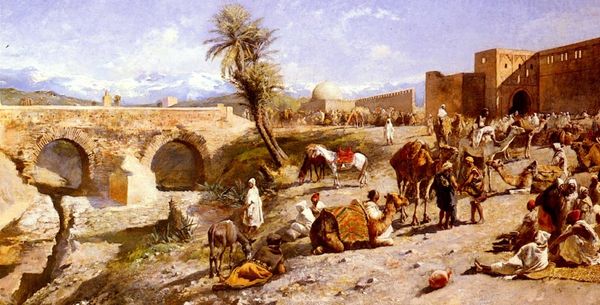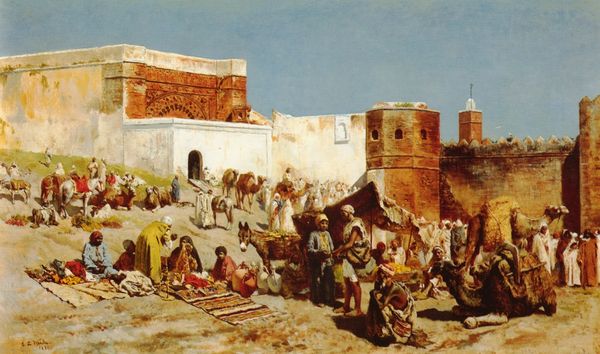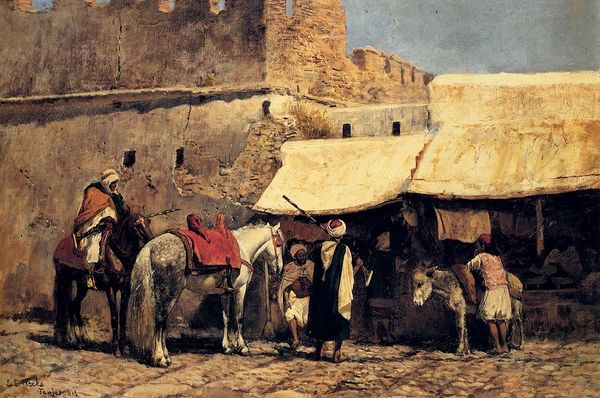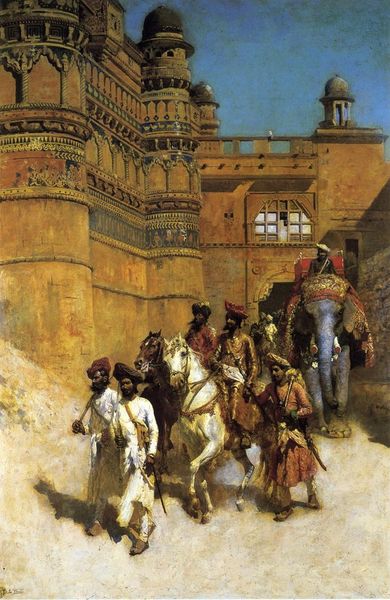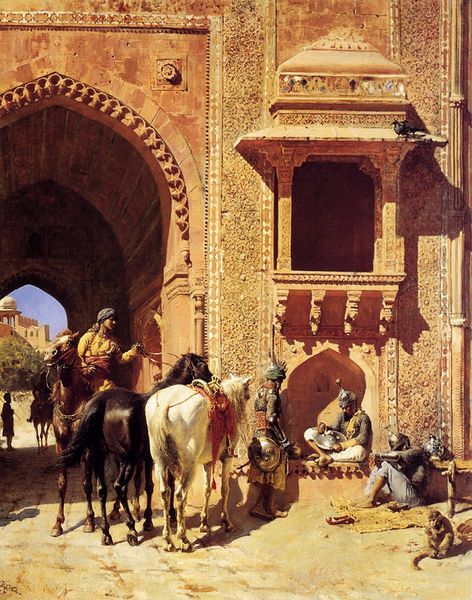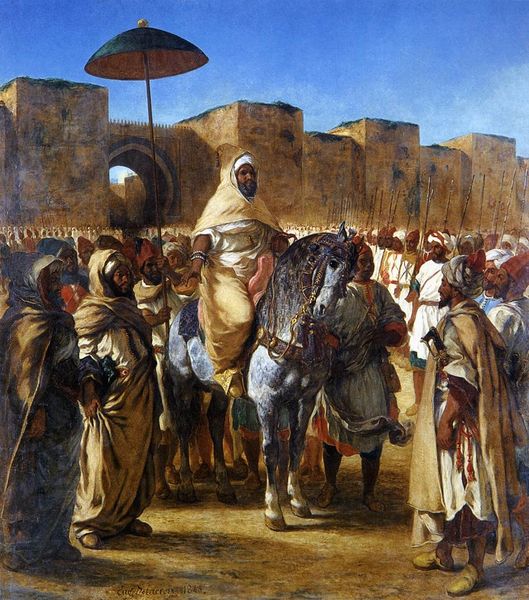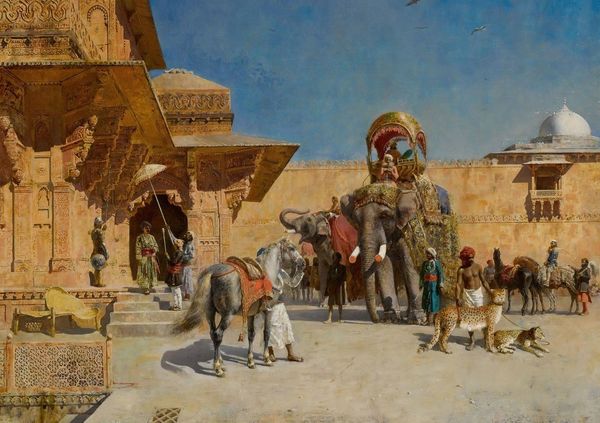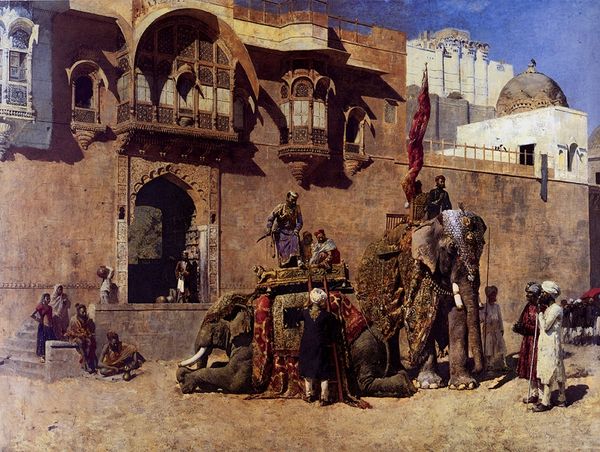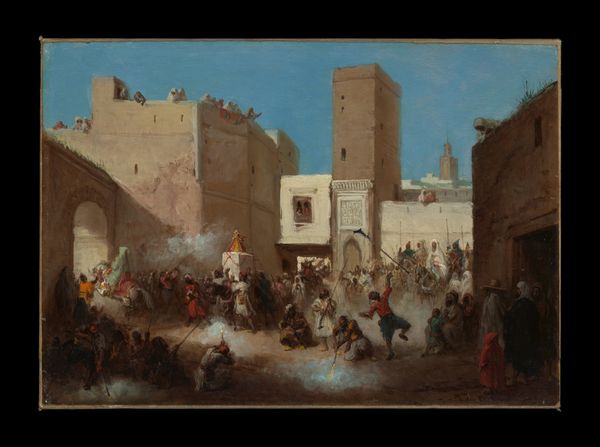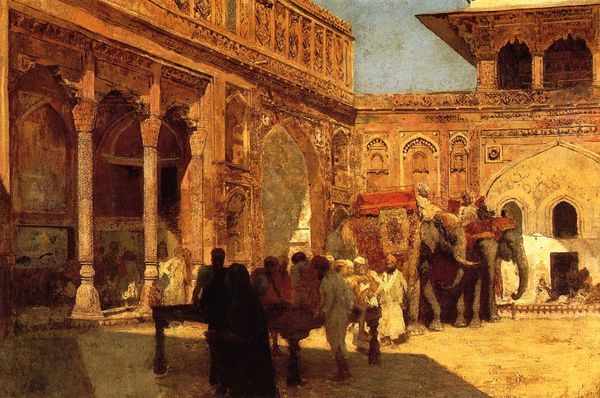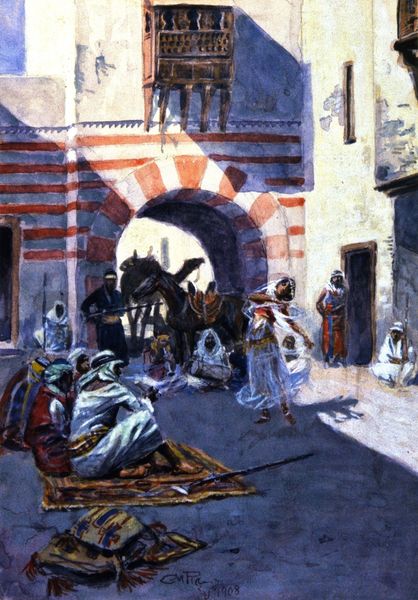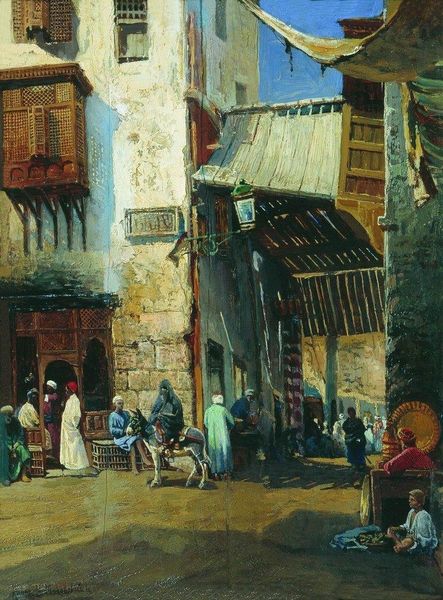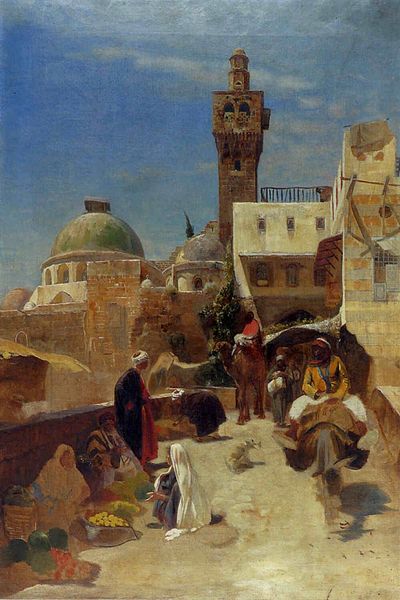
Dimensions: 91.44 x 154.3 cm
Copyright: Public domain
Editor: This is Edwin Lord Weeks' "Arrival of a Caravan Outside The City of Morocco," painted in 1882. The sheer scale of the scene is impressive, with so many figures and animals depicted. What strikes me most is how the scene seems caught between activity and repose. What do you make of it? Curator: I see a fascinating interplay between material representation and the social reality it depicts. Weeks, an American painter working in the Orientalist style, created this using oil paint - a key element tied to European art markets and patronage. Consider the labor involved in extracting and processing those pigments, and the canvas itself, woven from materials sourced and traded. This becomes part of the narrative. How does the depiction of this caravan and city reflect on the exchange of goods, not just within the painting but through its very existence as a commodity? Editor: So, you're suggesting the painting is not just *of* trade but also implicated in it? The caravan, with its figures, camels, and wares…it’s all material. Curator: Exactly! Weeks painstakingly represents the fabrics, the architectural details of the city gate, and the tools of travel. All of that highlights his technical skill but also the network of global exchange that allowed for both the caravan's existence and Weeks' ability to paint it. What about the artist's own journey? How did his experience influence the scene? Editor: That's interesting. So, it makes me wonder about Weeks's travels, and how his encounter with Moroccan culture resulted in the choices of materials he employed back home. Curator: And how the audience back home, engaging with it, continued that circuit of production, labor, and representation. Thank you. Editor: Thanks, I have learned that this image represents also commercial and social dynamics.
Comments
No comments
Be the first to comment and join the conversation on the ultimate creative platform.
